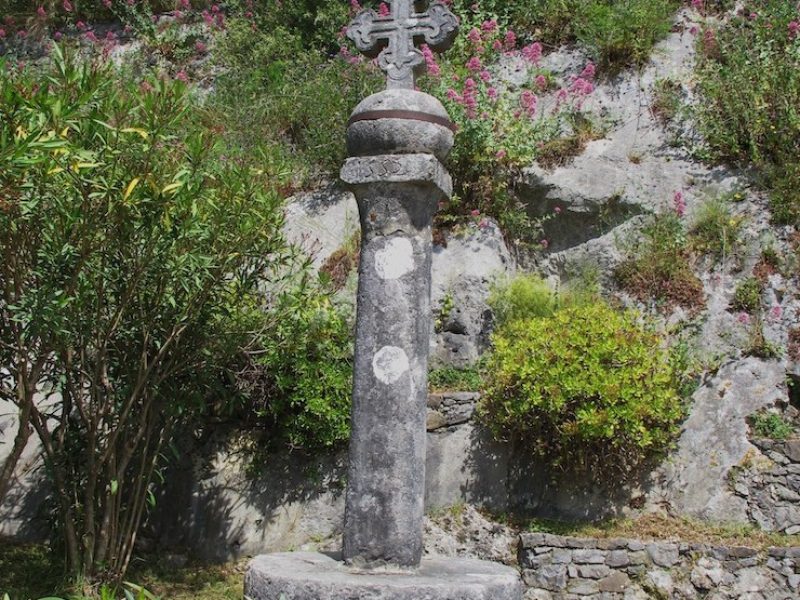The cross, dating back to 1552, is still in a perfect state of conservation. It is entirely made of local limestone; it is placed on a cylindrical column surmounted by an ovoid reinforced by a metal band (posthumous) and rests on a circular pedestal with three steps (the first is underground).It was restored in 1614 and 1635, as it can be gathered from the visible engravings. Originally, at least until the 1960s, it had always been located in the same locality, but it has later been moved downstream, in the immediate vicinity of the Chapel of San Giacomo Apostolo, which has now disappeared. It represents an anchored cross placed inside a trifoliate cross.The Chapel of San Giacomo was erected to celebrate the victory of the Christians against the Turks in the naval battle of Lepanto,as thanks for the lucky escape from their incursions,which, caused so much desolation along the Cilento coasts for the whole sixteenth century.The storyOn the evening of July 10th, 1552, a Muslim fleet of 123 ships cast anchor in the Gulf of Policastro, in a location currently known as Oliveto. At dawn of the following day, the Muslims, led by Dragout-Rais Bassà, known as Dragut, sacked and destroyed Policastro, San Cristoforo, Ispani, Vibonati, Santa Marina, San Giovanni a Piro, Bosco, Torre Orsaia, Roccagloriosa and Castel Ruggero. Many fugitives found refuge within the solid walls of Tortorella. Local legends have it that, when the corsairs reached the gates of the town, the siege was violent, but the sacrifice of numerous human lives prevented both the entry of the Turks into the country and their frenzied advance towards the hamlets of Battaglia and Casaletto. Having escaped the danger, the survivors raised a massive stone cross at the foot of the hill, as a warning to Muslims about the proud Christian devotion of the Tortorellesi.
